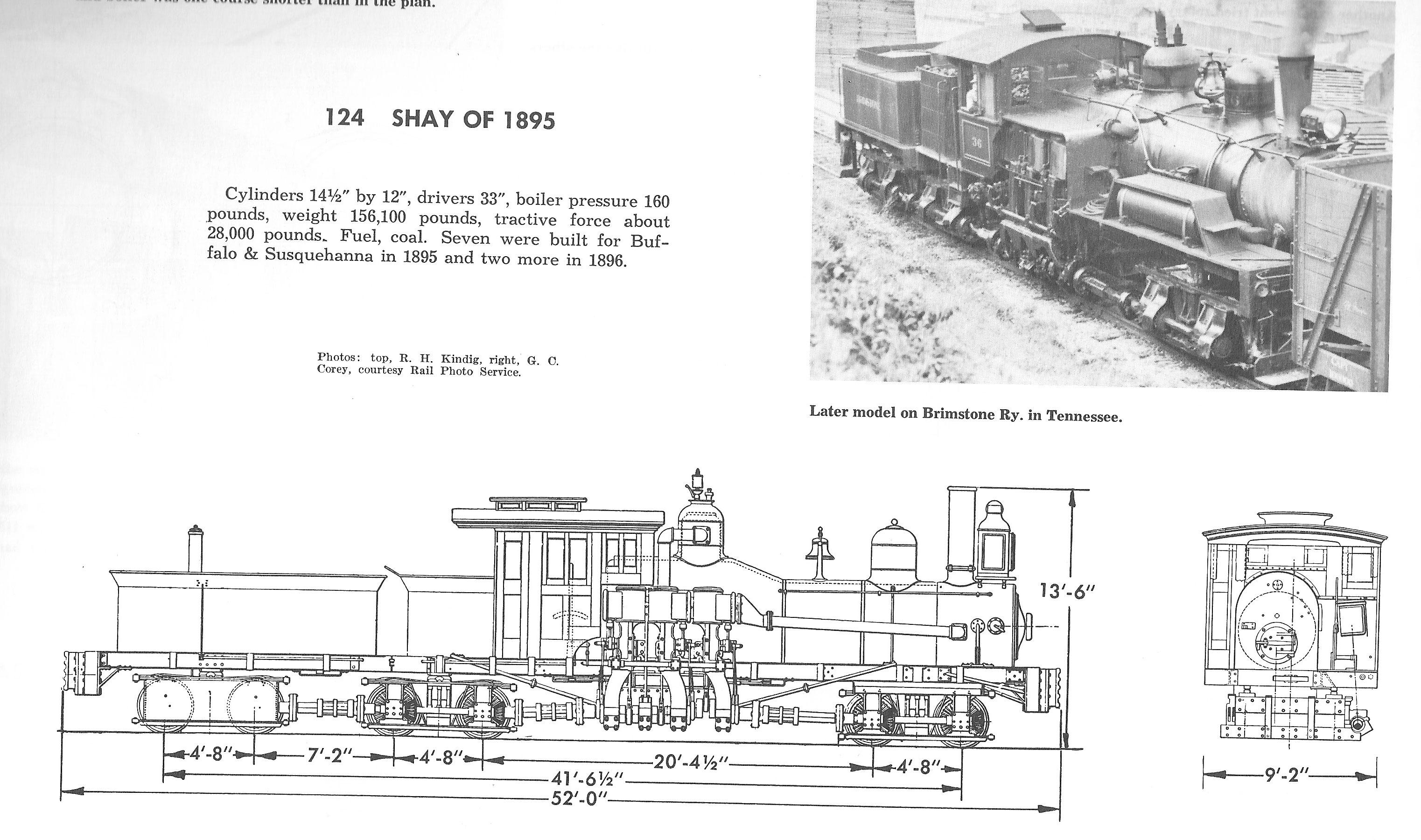They look very much like the Shays that were used on the Newnes railway (Wolgan Valley), with their upright pistons and offset boiler. I know they were imported from the USA so may be the same class etc?
The poor fireman would be busy keeping steam up to the whistle happy driver.
[ame=http://www.youtube.com/watch?v=TbsbcZKCWDY]Geared Steam Locomotives in Cass WV - YouTube[/ame]
If you don't like trucks, stop buying stuff.
They look very much like the Shays that were used on the Newnes railway (Wolgan Valley), with their upright pistons and offset boiler. I know they were imported from the USA so may be the same class etc?
Driver is an artist with the whistle love watching and listening to steam
I think all of that style were built under Shay's patents, but by a number of manufacturers over a long period. If I remember rightly the Newnes ones were the largest built. There were few of them identical to each other, and never all that many.
The bogie drive meant that they had low axle loading for their tractive effort and no restriction on curve radius, but the gears and shafts meant they were expensive to build and maintain compared with conventional locos, but still a lot cheaper than upgrading the track to allow these. Hence only used on 'special' railways. Originally designed for temporary timber getting lines.
John
John
JDNSW
1986 110 County 3.9 diesel
1970 2a 109 2.25 petrol
The driver certainly gave the whistle a hiding. First time I have seen that type of engine, certainly a complex driving mechanism.
Thanks for sharing, Ian!!
Ian, you got me curious, so I looked up good old Wikipedia.
[ame="http://en.wikipedia.org/wiki/Geared_steam_locomotive"]Geared steam locomotive - Wikipedia, the free encyclopedia[/ame]
G day all.
Yes, the Shay is an interesting departure from the "norm" of steam locomotive design. As has been stated, they are designed for roughly laid, curvy and steep rail lines. I have to say that the American practice of sounding the whistle constantly and that bloody bellis annoying to me. The fireman has got it easy, its oil fired, American engine men are lazy.
There is another type of geared loco used in much the same conditions. Known as the Climax. Angled cylinders driven by Stephenson's valve gear driving a shaft which is geared to a drive shaft that drives the two 4 wheel bogies. There are both an operational Climax and a non operational Shay at the Puffing billy railway.
Here's a clip of the Puffing billy Climax 1694. She is wood fired.
Regards
Robbo
[ame=http://www.youtube.com/watch?v=3xiiVMI_Y48]Climax 1694 Recommissioning at Puffing Billy - YouTube[/ame]
The maximum speed of the Shays on the Newnes railway was about 8 mph - it would have been an all day trip Newnes - Newnes Junction (nr Clarence) - Newnes.
I imagine there would have been a bit of gear noise from the bevel drives.
The book on the Newnes railway (Shays in the Valley) details how the Shays could cope with grades and curves that other types of loco would have been unable to use. The engineering experience gained on the Newnes railway helped with the design of the steep Tumut- Batlow railway (which was still in use until about 1980).
As far as the use in timber-getting regions in the US goes - I read somewhere that the spur lines were so temporary that timber rails were used to allow for easy redeployment to another site - has anyone else read this ?
Just googling - this is interesting with some pics of the real ones : http://web.aanet.com.au/bayling/shay.html
Last edited by 87County; 11th January 2014 at 09:25 AM. Reason: add link
Wooden rails were used on many early railways, so I would be very surprised if they were not used on US timber getting railways. A slight advance was to fit an iron plate on top of the rail. I have seen timber rails used in sawmill tracks using winch/gravity in Australia in the 1950s near Tumbarumba.
John
John
JDNSW
1986 110 County 3.9 diesel
1970 2a 109 2.25 petrol
In North America, the shays were one of the last steam locos types used in regular service, long after main line and branch line services were dieselised.
The shays were not only good with tight curves and steep inclines but they had huge pulling power, because of the low speed.
To give a better idea of their size, I scanned this from the Model Railroaders Steam Locomotive Cyclopedia.

| Search AULRO.com ONLY! |
Search All the Web! |
|---|
|
|
|
Bookmarks